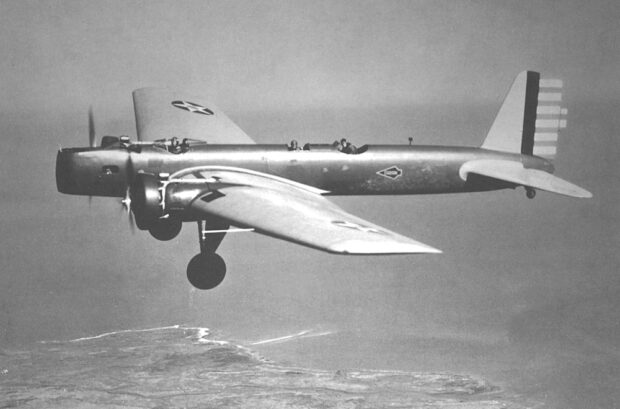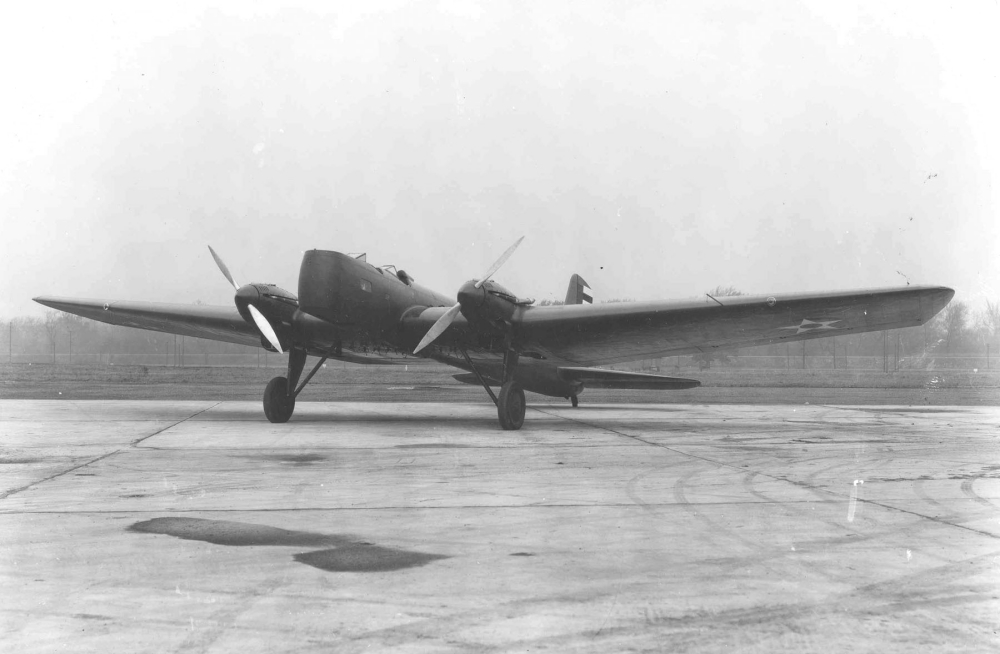The Boeing YB-9 (Also known as the Model 214/215/246) was the company’s first all-metal bomber design. In 1930, the bomber squadrons operated by the US Army Air Corps mostly consisted of slow biplanes. Boeing had recently built its successful all-metal Monomail transport, and wanted to use their experience to build something bigger.
When complete, the YB-9 was able to outrun most conventional fighters at the time, thanks to a light air-frame, sleek design, and powerful engines. Though the Army Air Corps tests looked promising, no large production orders were made as Glen Martin Company had brought out its own design which would go on to become the Martin B-10.
In May 1930, Boeing had flown its Model 200 Monomail single-engined mailplane. The Monomail was of radical design for the time, being a semi-monocoque, stressed skin cantilever monoplane with a retractable undercarriage. Air Corps bomber squadrons of the day were largely equipped with slow strut-braced biplanes built from steel-tube frames covered in doped fabric, such as the Keystone B-6, and Boeing decided to design and build a twin-engined bomber using the same techniques used in the Monomail to re-equip the Air Corps.
Using its own money, Boeing decided to build two prototypes of its new bomber design as a private venture. The two aircraft differed only in the engines used, with the Model 214 to be powered by two liquid-cooled Curtiss V-1570-29 Conqueror engines while the Model 215 had two Pratt & Whitney R-1860 Hornet B radial engines. Both aircraft were low winged cantilever monoplanes with a slim, oval cross-section fuselage accommodating a crew of five. The pilot and co-pilot sat in separate open cockpits, with the co-pilot, who doubled as the bombardier sitting forward of the pilot. Two gunners, each armed with a single machine gun sat in nose and dorsal positions, while a radio operator sat inside the fuselage. Like the Monomail, a retractable tailwheel undercarriage was used.
The first of the two prototypes to fly was the radial powered Model 215 which, carrying civil markings and the aircraft registration X-10633, made its maiden flight on 13 April 1931. It was leased to the Air Corps for testing under the designation XB-901, demonstrating a speed of 163 mph (262 km/h). Testing was successful, and both the XB-901 and the as-yet incomplete Model 214 were purchased as the YB-9 and Y1B-9 respectively on 13 August 1931, with an order for a further five for service testing following shortly.
The Y1B-9 (Y1 indicating funding outside normal fiscal year procurement), powered by two liquid-cooled Curtiss V-1570-29 ‘Conqueror’ engines, first flew on 5 November 1931. The increased power from these engines, combined with increased streamlining of the engine nacelles, increased its top speed to 173 mph (278 km/h). The YB-9, meanwhile, had been re-engined with more powerful Hornet Bs, demonstrating slightly better performance than the Y1B-9, which was therefore also re-engined with Hornet Bs. With the exception of the B-2 Condor, liquid-cooled engines were never used on production bombers for the United States military. The air-cooled radial engine was lighter and more reliable than the liquid-cooled engine, and less vulnerable to enemy damage.
The five Y1B-9A service test aircraft (Boeing Model 246) had the Pratt & Whitney R-1860-11 Hornet B engines which powered the re-engined YB-9 and Y1B-9 and a redesigned vertical stabilizer modeled on the 247D transport. While enclosed canopies were considered and designed, the B-9 was never fitted with them.[8] Although it equaled the speed of all existing American fighter aircraft, no further aircraft were built, as the Glenn L. Martin Company had flown a prototype of a more advanced bomber, the XB-907, which was ordered into production as the Martin B-10.
Operational history
The first of the five Y1B-9As entered service with the 20th and 49th Bombardment Squadrons, 2nd Bomb Group on 14 September 1932, with all being in service by the end of March 1933. The new bomber proved impossible to intercept during air exercises in May 1932, strengthening calls for improved air defense warning systems. Two B-9s were destroyed during crashes in 1933, one of the accidents being fatal, while the remaining aircraft were gradually phased out over the next two years, with the last being withdrawn on 26 April 1935.
Sources: YouTube; Wikipedia


